The Mitsubishi 4G64 engine is more than just a piece of machinery; it’s a testament to a legacy of durability and precision. Crafted with meticulous attention to detail, this engine reflects Mitsubishi’s commitment to excellence and innovation. Whether you’re a seasoned mechanic, a Mitsubishi enthusiast, or a potential owner looking to make an informed decision, understanding the intricacies of the 4G64 engine is essential.
With its origins tracing back to the heyday of automotive engineering, the 4G64 has evolved through the years, embracing new technologies while maintaining the core attributes that have made it a favorite. Its widespread use in various models underscores its adaptability and the trust that drivers place in its capabilities.
4G64 Engine Specs
The Mitsubishi 4G64 engine has been a mainstay in the automotive industry, powering various vehicles with its robust design and proven durability.
| Specification | Detail |
|---|---|
| Displacement | 2.4 Liters (2350 cc) |
| Configuration | Inline-4 |
| Bore x Stroke | 86.5 mm x 100 mm |
| Compression Ratio | 9:1 (varies by model) |
| Fuel System | Multi-point fuel injection |
| Max Power | Varies: 130-150 hp |
| Max Torque | Varies: 140-165 lb-ft |
| Aspiration | Naturally Aspirated |
Performance Metrics
- Horsepower and Torque: With a range of 130-150 hp and torque figures spanning 140-165 lb-ft, the 4G64 engine offers a reliable power delivery suitable for a wide spectrum of automotive needs, from city commuting to off-road ventures.
- Durability: Known for its longevity, the engine’s robust construction and proven track record make it a dependable choice for long-term use.
- Adaptability: The 4G64’s versatile nature allows it to be modified for enhanced performance, catering to the custom needs of car tuning enthusiasts.
Design Highlights
- Cylinder Head: The engine features a SOHC/DOHC design, with some variations equipped with Mitsubishi’s innovative MIVEC (Mitsubishi Innovative Valve timing Electronic Control) system.
- Material: Using cast iron for the engine block and an aluminum cylinder head, the 4G64 balances durability and weight efficiency.
- Emissions: Adherence to emissions standards over the years demonstrates Mitsubishi’s commitment to environmentally conscious engineering practices.
Evolution and Upgrades
The 4G64 engine has seen various upgrades throughout its production to enhance its performance and efficiency. Key enhancements include:
- Improved fuel injection systems for better fuel economy and power.
- Integration of balance shafts to reduce vibration and enhance engine smoothness.
- Advancements in the MIVEC technology for superior valve timing and improved performance.
The Mitsubishi 4G64 is not just an engine; it’s a symbol of resilience and adaptability, continuing to evolve with the times while maintaining its core attributes of reliability and performance.
The Design and Build of the 4G64 Engine: An Engineer’s Dream
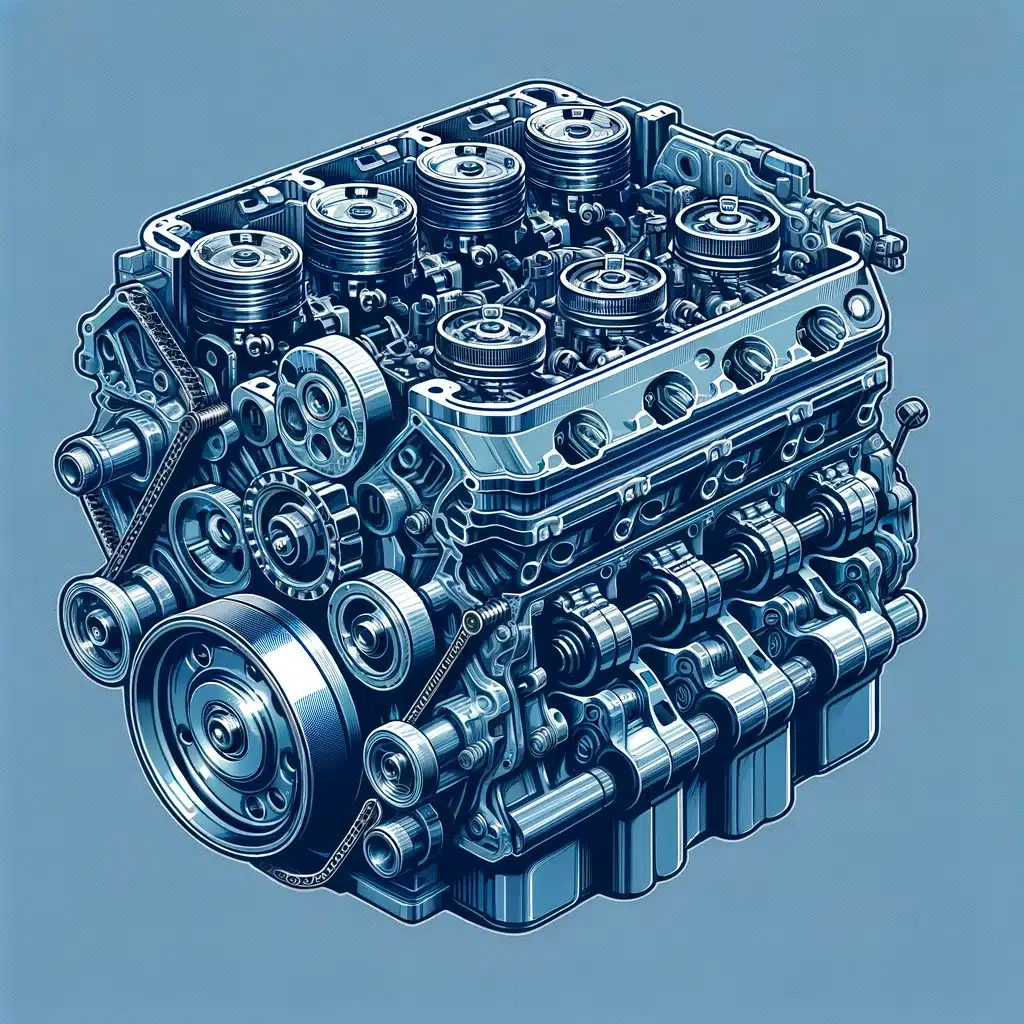
The Mitsubishi 4G64 engine is a marvel of automotive engineering, designed with a focus on both performance and reliability. Its construction showcases Mitsubishi’s dedication to creating engines that stand the test of time.
Materials and Configuration
- Engine Block: Cast Iron
- Cylinder Head: Aluminum Alloy
- Valvetrain: SOHC/DOHC with 4 Valves per Cylinder
Innovative Features
- MIVEC Technology: Some variants of the 4G64 incorporate Mitsubishi’s MIVEC (Mitsubishi Innovative Valve Timing Electronic Control) system, enhancing engine efficiency and power output.
- Balance Shafts: These reduce engine vibration, leading to a smoother and quieter operation.
Engine Configuration Details
| Component | Specification |
|---|---|
| Valves | 16-Valve (4 per cylinder) |
| Intake System | Naturally Aspirated |
| Fuel Delivery | Multi-Point Injection |
| Cooling System | Liquid-Cooled |
This engine’s design is not just about raw power; it’s about creating a harmonious balance between performance and everyday usability. The 4G64 remains a reliable companion, thanks to its thoughtful engineering, whether cruising on the highway or navigating rough terrain.
Engine Valve Timing
| Intake valve Open BTDC | 20” 19” |
| Intake valve Close ABDC | 64” 57” |
| Exhaust valve Open BBDC | 64” 57” |
| Exhaust valve Close ATDC | 20” 19” |
Torque Specifications
| Part | Nm | ft.1b.s. |
|---|---|---|
| Cooling fan bolt | 11 | 8 |
| Water pump pulley bolt – Engine without cooling fan | 9 | 7 |
| Water pulley bolt pump – Engine with the cooling fan | 11 | 8 |
| Generator brace bolt | 14 | 10 |
| Generator mounting bolt | 24 | 17 |
| Generator pivot nut | 23 | 17 |
| Crankshaft pulley bolt | 25 | 18 |
| Spark plug | 25 | 18 |
| Distributor nut | 11 | 8 |
| Ignition coil bolt | 14 | 10 |
| Ignition power transistor nut | 18 | 13 |
| Tensioner bolt | 49 | 35 |
| Tensioner spacer | 49 | 35 |
| Oil pumps sprocket nut | 55 | 40 |
| Crankshaft sprocket bolt | 120 | 87 |
| Tensioner “B” bolt | 19 | 14 |
| Silent shaft sprocket bolt, right | 46 | 33 |
| The engine supports bracket bolt, left | 36 | 26 |
| Camshaft sprocket bolt | 90 | 65 |
| Throttle body bolt – SOHC | 12 | 9 |
| Fuel rail bolt | 12 | 9 |
| Fuel pressure regulator bolt | 9 | 7 |
| Throttle position sensor bolt | 2 | 1.4 |
| Idle speed control motor bolt | 3.5 | 2.5 |
| Idle air control motor bolt | 3.5 | 2.5 |
| Turbocharger wastegate actuator bolt | 12 | 9 |
| Bearing cap bolt M8x25 M8x65 | 24 20 | 17 14 |
| Cylinder head bolt | 95 | 69 |
| Oil bolt | 7 | 5 |
| Oil filter bracket bolt | 19 | 14 |
What Cars Have The 4G64?
- 1993-1997 Mitsubishi Chariot
- 1988–2006 Mitsubishi Delica/Van
- 1997-1999 Mitsubishi Eclipse GS Spyder Convertible FWD model equipped with a 141 hp (105 kW) 2.4 L 16-valve SOHC
- 2000-2005 Mitsubishi Eclipse
- 1994–2003 Mitsubishi Galant
- 1990–present Mitsubishi L200
- 1996–1998 Mitsubishi Magna (codenamed 4G64-S4 and fitted to the TE-TF series)
- 1990–1996 Mitsubishi Mighty Max
- 1998-2005 Mitsubishi Montero (V11 – 2 door) Latin America version
- 2001 Mitsubishi Airtrek
- 2003 Mitsubishi Outlander
- 1987–1990 Mitsubishi Sapporo
- 1986-2005 Mitsubishi Triton
- 2005 Mitsubishi Zinger
- 2003-2006 Kia Sorento 2.4i Manual
- 2004–present Brilliance BS6
- 2008–present Chery V5
- 1983–1992 Dodge Colt Vista (AWD only)
- 1990–1992 Dodge Ram 50
- 2006–present Great Wall Hover(X240 and V240)
- 1986-1998 Hyundai Grandeur
- 1989–1991 Hyundai Sonata
- 1999–2005 Hyundai Sonata
- 2001 Hyundai Santa Fe
- 2000–2005 Kia Optima
- 1998-2003 Mitsubishi Space Wagon
Sealant
| Part | Specified sealant | Quantity |
|---|---|---|
| Rocker cover | 3M ATD Part No. 8660 or equivalent | As required |
| Semi-circular packing | 3M ATD Part No. 8660 or equivalent | As required |
| Oil pan gasket | MITSUBISHI GENUINE PART MD970389 or equivalent | As required |
| Engine coolant temperature gauge unit | 3M ATD Part No. 8660 or equivalent | As required |
| Engine coolant temperature sensor | 3M Nut Locking Part No. 4171 or equivalent | As required |
| Oil pressure switch | 3M ATD Part No. 8660 or equivalent | As required |
| Oil pressure gauge unit | 3M ATD Part No. 8660 or equivalent | As required |
4G64 Destroker
The 4G64 engine has a high rod-to-stroke ratio that is advantageous for reaching high revolutions. However, the reduction in displacement comes from long rods and short-stroke camshafts, which result in a 2.1l engine.
This can be remedied by taking a 4G64 block or using one of these blocks with an existing 4G63 that results in an 88mm crankshaft length. 156mm connecting rods are needed, as well as installation of oil jets into the block before you install your destroker kit due to ACL bearings and around 8 hours, work on average time per crank to have it ready.
Engine Firing Order and Mechanics: The Rhythm of Power
An engine’s firing order is akin to a living organism’s heartbeat — it’s crucial for an engine’s smooth operation and efficiency. The Mitsubishi 4G64 is no exception, with a firing order designed to balance power and smoothness.
Understanding the 4G64’s Firing Order
The 4G64 engine fires in a 1-3-4-2 sequence, which is standard for many inline-four engines. This specific order is engineered to minimize vibration and maximize power delivery.
Firing Order Details:
- 1st Cylinder: Begins the power cycle, setting the rhythm.
- 3rd Cylinder: Follows after the first, continuing the momentum.
- 4th Cylinder: Fires next, maintaining engine balance.
- 2nd Cylinder: Completes the cycle, readying the engine for the next round.
Mechanical Symphony
Each ignition is precisely timed with the crankshaft’s rotation, ensuring that power is produced at optimal intervals. This timing is crucial for:
- Reducing engine wear
- Ensuring smooth operation
- Maximizing fuel efficiency
The 4G64’s firing order and mechanics provide a reliable power output and contribute to the engine’s longevity and consistent performance over time.
Mitsubishi 4G64 Oil Specifications
The lifeblood of any engine is its oil, which is vital for lubrication, cooling, and protection. The Mitsubishi 4G64 engine requires specific oil types and servicing intervals to maintain its legendary performance and longevity.
Choosing the correct oil for the 4G64 is crucial. The manufacturer’s recommended oil specifications ensure that your engine runs smoothly, with reduced friction and wear.
Recommended Oil Type
- Synthetic Oil: For enhanced engine protection and performance.
- Viscosity Grade: Typically 10W-30, suitable for various temperatures and driving conditions.
Oil Capacity and Change Intervals
Proper maintenance includes using the right oil and adhering to recommended change intervals.
| Oil Capacity | Change Interval |
|---|---|
| 4.5 Quarts | Every 7,500 miles or 6 months (whichever comes first) |
Key Points to Remember:
- Oil Level: Regularly check the oil level to prevent running low, which can lead to engine damage.
- Oil Filter: Replace the oil filter with every oil change to ensure system cleanliness.
- Service Records: Keep a log of oil changes for future reference and to maintain the vehicle’s value.
By following these oil specifications, your Mitsubishi 4G64 engine will continue to deliver the performance and reliability it’s known for, mile after mile.
Timing System: Belt or Chain?
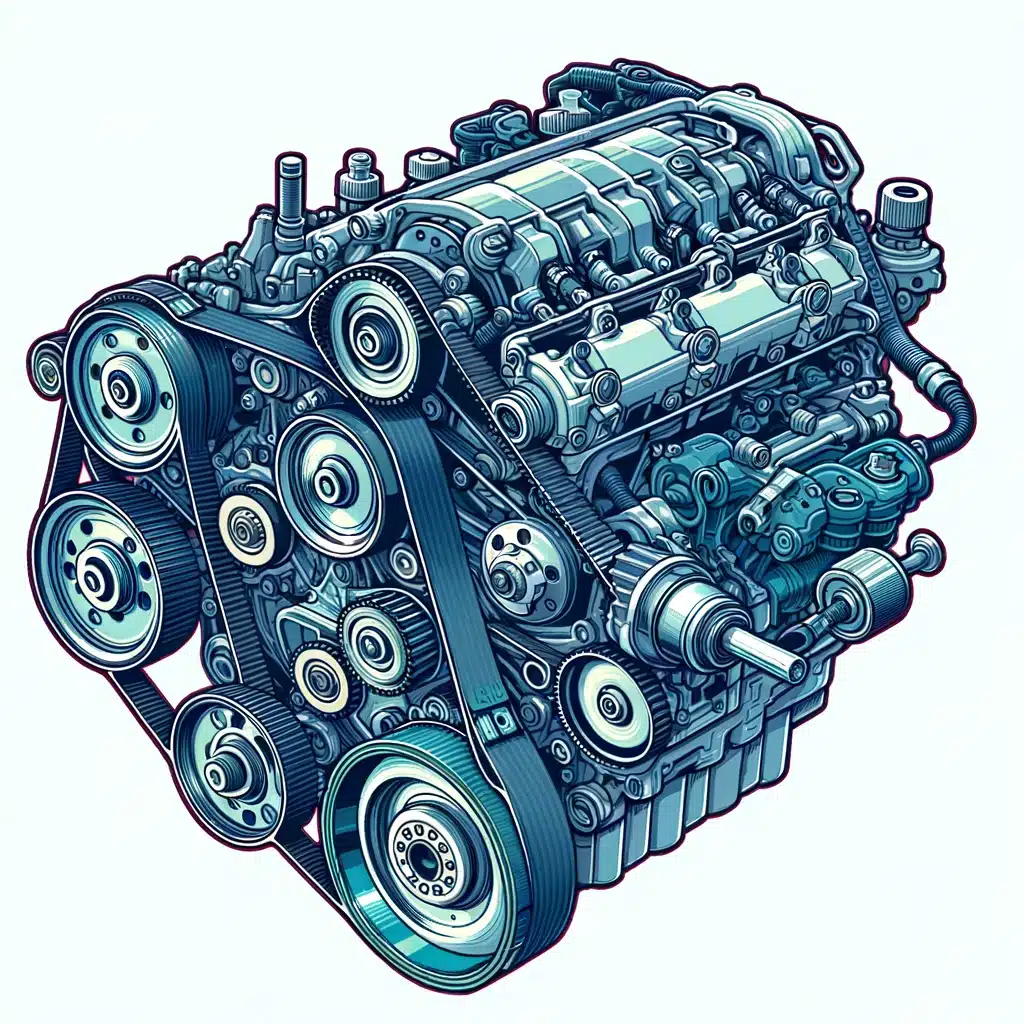
The Mitsubishi 4G64 engine is equipped with a timing belt. This critical component ensures the engine’s valves open and close at the correct times during each cylinder’s intake and exhaust strokes. The precision of the 4G64’s timing mechanism is paramount to the engine’s performance and health.
Understanding the timing belt mechanism:
- The timing belt is made of rubber and reinforced with high-strength fibers.
- It synchronizes the rotation of the crankshaft and camshaft.
- The belt ensures that the engine’s valves and pistons move in harmony.
The Importance of Regular Replacement
- Wear and Tear: Over time, the timing belt can stretch, fray, or break.
- Preventive Maintenance: Regular inspection and timely timing belt replacement are crucial to prevent engine damage.
Replacement Intervals
- Typical Recommendation: Every 60,000 to 75,000 miles, or as advised by Mitsubishi.
- Service Inspection: A technician should inspect the belt during regular service intervals.
Consequences of Neglect
- Ignoring the replacement schedule can lead to a snapped timing belt.
- A failed belt can cause severe internal engine damage, often resulting in costly repairs.
Signs of a Worn Timing Belt
- Unusual noises from the timing cover area.
- Rough engine operation or misfires.
- Decreased engine power or a sudden loss of power.
By adhering to the recommended timing belt maintenance schedule, you can ensure that your Mitsubishi 4G64 engine maintains power and precision for the long haul.
Interference vs. Non-Interference Engine
The Mitsubishi 4G64 engine is an interference-type engine, a distinction that has significant implications for maintenance and repair. Understanding this characteristic is vital for any owner or technician working with the 4G64.
- Valve Design: In an interference engine, the valve’s path can intersect with the piston’s trajectory.
- Precision Timing: The timing belt’s role is critical; it keeps the valves and pistons from colliding.
Implications for the 4G64 Engine
- Damage Prevention: A broken timing belt in an interference engine often leads to valve and piston damage, making timely replacement essential.
- Maintenance Costs: While the interference design can improve engine efficiency, it may lead to higher costs in the event of a timing belt failure.
Best Practices for Maintenance
- Adhere strictly to the 4G64’s timing belt service interval.
- Conduct regular inspections for early detection of wear and tear.
- Understand that preventive maintenance can significantly reduce the risk of severe engine damage.
For the 4G64 engine, the interference design underscores the importance of diligent maintenance to ensure longevity and prevent costly repairs.
Fuel Economy: Understanding MPG in the 4G64 Engine
The fuel economy of the Mitsubishi 4G64 engine is a measure of its efficiency, reflecting how well it converts fuel into driving distance.
The 4G64 engine’s MPG can vary based on vehicle model, driving habits, and maintenance practices. On average, you can expect:
| Driving Condition | Estimated MPG |
|---|---|
| City Driving | 20-22 MPG |
| Highway Driving | 27-30 MPG |
Improving your vehicle’s fuel efficiency can save money and reduce environmental impact. Consider these tips:
- Regular Maintenance: Keep your engine in top condition with routine servicing.
- Tire Pressure: Ensure your tires are inflated to the manufacturer’s recommended levels.
- Driving Habits: Accelerate gently and avoid idling to conserve fuel.
- Excess Weight: Remove unnecessary items from your vehicle to reduce weight.
By following these guidelines, you can help your 4G64 engine run more efficiently, making the most of every gallon.
Spark Plugs and Gapping for the 4G64 Engine: Igniting Performance
For the Mitsubishi 4G64 engine, the right spark plugs and proper gapping are crucial for optimal performance and engine health.
The manufacturer’s specifications should guide your choice of spark plugs to ensure compatibility and peak performance.
- Material: Iridium or platinum plugs are recommended for their longevity and resistance to wear.
- Heat Range: Appropriate for the engine’s operating conditions to prevent fouling or pre-ignition.
Proper Gapping and Its Benefits
The gap between the spark plug’s electrode and ground is pivotal for proper ignition.
- Gap Setting: Typically, the 4G64 engine requires a gap of 0.028-0.031 inches (0.7-0.8 mm).
- Consistent Spark: Correct gapping ensures a consistent spark, which is essential for efficient combustion.
A well-maintained spark plug system can significantly affect your engine’s performance.
- Fuel Efficiency: Properly gapped spark plugs can improve fuel economy.
- Engine Start-up: Good spark plug health ensures smooth starting conditions.
- Emission Reduction: Efficient combustion leads to fewer engine emissions.
Regular inspection and replacement of spark plugs, according to service intervals, will keep your 4G64 engine running smoothly, efficiently, and powerfully.
Horsepower: The Power Behind the 4G64 Engine
Horsepower is the unit of measurement that quantifies the power output of an engine, and for the Mitsubishi 4G64, it’s a testament to its capability and engineering.
Measuring Horsepower in the 4G64:
- Dynamometer Testing: The 4G64’s horsepower is measured using a dynamometer which calculates the power produced by the engine as it turns a shaft.
- Standardized Metrics: The results are standardized, ensuring consistency and comparability with other engines.
4G64 Engine Horsepower Stats and Comparisons:
- Range: Horsepower output for the 4G64 engine typically ranges between 130 to 150 HP.
- Performance: This places the 4G64 in a competitive position against similar engines in its class, offering a balance of power and efficiency.
Competitive Edge:
- Versatility: The 4G64’s power is adaptable to various uses, from everyday commuting to more demanding applications.
- Comparison: When matched with engines of similar displacement, the 4G64 often excels in longevity and fuel efficiency, even with comparable horsepower figures.
Understanding the horsepower of the 4G64 engine is key to appreciating its place in the automotive world and making informed comparisons with its contemporaries.
Engine Cooling System and Coolant Recommendations
The engine cooling system in the Mitsubishi 4G64 plays a pivotal role in maintaining optimal operating temperatures and preventing overheating, which can cause significant engine damage.
Vital Functions of the Cooling System
- Heat Dispersion: Transfers excess heat away from the engine block and cylinder head.
- Temperature Regulation: Maintains consistent engine temperatures under various operating conditions.
Choosing the Right Coolant
- Type: Ethylene glycol-based coolant is recommended for the 4G64 engine.
- Additives: Ensure it contains anti-corrosive additives to protect the engine internals.
Coolant Replacement Intervals
- Initial Change: Typically at 60,000 miles.
- Subsequent Changes: Every 30,000 miles or as per the manufacturer’s recommendation.
Maintaining Cooling System Health
- Regular Checks: Monitor coolant levels and inspect for leaks regularly.
- System Flush: Perform a cooling system flush at recommended intervals to remove contaminants.
Engine Air Filter Maintenance: Ensuring Clean Air Flow
The engine air filter is a gatekeeper for the Mitsubishi 4G64 engine, ensuring that only clean air reaches the combustion chambers. A well-maintained air filter is essential for engine efficiency and longevity.
Selecting an Air Filter:
- Quality: High-quality filters will capture more contaminants and last longer.
- Compatibility: The filter must be designed to fit the specific intake system of the 4G64.
Air Filter Replacement Guidelines:
- Standard Replacement: Generally, replace the air filter every 12,000 to 15,000 miles.
- Driving Conditions: Dusty or dirty conditions may necessitate more frequent changes.
Impact on Engine Performance:
- Fuel Efficiency: A clean air filter can improve fuel economy by allowing for a proper air-fuel mixture.
- Engine Life: Regular replacement helps prevent abrasive particulate matter from wearing on internal engine components.
Maintaining both the cooling system and air filter in the Mitsubishi 4G64 engine is essential for the engine’s performance, efficiency, and durability. Regular checks, appropriate coolant selection, and timely air filter replacements will keep the 4G64 running smoothly for miles to come.
Common Issues and Reliability of the Mitsubishi 4G64 Engine

The Mitsubishi 4G64 engine is well-regarded for its durability and longevity, but like any mechanical system, it can encounter issues. Understanding these common problems and their symptoms can help owners address concerns early.
Typical Issues and Symptoms:
- Overheating: May indicate a failing thermostat, clogged radiator, or coolant leak.
- Oil Leaks: Often from valve cover gaskets or front main seals deteriorating over time.
- Timing Belt Wear: A serious concern that can lead to engine damage if not addressed promptly.
| Problem | Symptom | Possible Cause |
|---|---|---|
| Overheating | A whirring noise from the engine | Coolant system failure |
| Oil Leaks | Spots under vehicle | Worn seals/gaskets |
| Timing Belt Wear | Whirring noise from engine | Aged or misaligned belt |
Owner Reports on Reliability:
- Mileage Milestones: Many 4G64 engines reach over 200,000 miles with proper maintenance.
- Maintenance Key: Regular service is a significant factor in achieving high mileage without major issues.
Bullet List of Reliability Insights
- Robust Design: Built to endure demanding conditions.
- Maintenance Schedule: Adherence to this is critical for longevity.
- Part Availability: Common parts are readily available, making repairs straightforward.
Owners report that with routine care, the 4G64 engine can serve reliably for years, making it a trusted choice for a wide range of applications.
Engine Repair and Maintenance Best Practices
Proper maintenance is the key to ensuring the longevity and reliability of the Mitsubishi 4G64 engine. Here is a routine maintenance checklist and some troubleshooting tips to keep your engine in peak condition.
Routine Maintenance Checklist:
- Oil and Filter Change: Every 7,500 miles or 6 months.
- Coolant Level and Quality: Check every 3 months and replace according to the service interval.
- Timing Belt Inspection: Every 60,000 miles, with replacement as needed.
- Air Filter Replacement: Every 12,000 to 15,000 miles, or more often in dusty environments.
- Spark Plugs: Check every 30,000 miles and replace as per the manufacturer’s recommendation.
- Idle Speed and Ignition Timing: Inspect at each service interval.
| Task | Frequency |
|---|---|
| Oil and Filter Replacement | 7,500 miles/6 months |
| Coolant System Check | Quarterly |
| Timing Belt Check | 60,000 miles |
| Air Filter Change | 12,000-15,000 miles |
| Spark Plug Replacement | 30,000 miles |
| Idle & Timing Check | At each service interval |
Tips for Troubleshooting Common Issues:
- Starting Problems: Check the battery, starter motor, and spark plug health.
- Overheating: Inspect the coolant level, radiator cap, thermostat, and cooling fans.
- Performance Drop: Consider cleaning or replacing the fuel and air filters and checking for vacuum leaks.
- Unusual Noises: Listen for timing belt whirring or tensioner rattles, and check for loose components or bearings.
Enhancing Your 4G64 Engine Performance
Boosting the performance of your Mitsubishi 4G64 engine can be both rewarding and challenging. With the right upgrades and an understanding of legal considerations, you can maximize your engine’s potential.
Performance Enhancements
- Cold Air Intake: Increases airflow to the engine for better combustion.
- Exhaust System Upgrades: Improves exhaust flow and can enhance horsepower.
- ECU Tuning: Optimizes the engine’s fuel and ignition settings for performance gains.
Bullet List of Upgrades
- Performance Chips: Adjust engine parameters for increased power.
- Forced Induction: Turbochargers or superchargers can significantly boost power.
- Suspension Mods: Enhance handling to match increased engine performance.
Legal Considerations
Before embarking on modifications, it’s important to consider the legal aspects:
- Emissions Compliance: Ensure that upgrades do not violate emissions standards.
- Noise Ordinances: Be aware of local noise regulations to avoid fines.
- Insurance Impact: Modifications might affect your vehicle’s insurance coverage.
Key Takeaways
- Research: Understand the specifics of each modification and its impact on your engine.
- Professional Installation: Use qualified mechanics to ensure upgrades are done correctly.
- Regulatory Compliance: Stay informed about legal requirements in your region.
By thoughtfully selecting performance parts and being mindful of legalities, you can enhance your 4G64 engine’s performance and enjoy the thrill of improved power and efficiency.
FAQs
- What is the typical lifespan of a 4G64 engine?
- With proper maintenance, a 4G64 engine can exceed 200,000 miles.
- Can I use synthetic oil in my 4G64 engine?
- Yes, synthetic oil is often recommended for its superior lubrication and longevity.
- What are the signs that the timing belt needs replacement?
- Listen for a whirring noise from the engine or check for visual signs of wear on the belt.
- How often should I change the spark plugs?
- Spark plugs should typically be changed every 30,000 miles.
- Is the 4G64 an interference engine?
- Yes, it is. This means that regular timing belt checks and changes are crucial.
- What upgrades can I make to improve performance?
- Consider a cold air intake, exhaust system upgrades, and ECU tuning for starters.
- Are there any common issues I should watch out for?
- Common issues include overheating, oil leaks, and timing belt wear.
- How can I improve the fuel efficiency of my 4G64?
- Regular maintenance, proper tire inflation, and mindful driving habits can all improve fuel efficiency.
- What type of coolant should I use for the 4G64?
- An ethylene glycol-based coolant with anti-corrosive additives is recommended.
- Can I still find parts for my 4G64 engine?
- Yes, parts are readily available due to the popularity and longevity of the engine.
Expert Advice:
- Maintenance is Key: Regular checks and timely replacements can prevent most issues.
- Consult Professionals: For performance upgrades, always consult with a professional to ensure compatibility and adherence to legal standards.
- Stay Informed: Keep up with the latest service bulletins and owner forums for the 4G64 for new insights and tips.
- Durability and Versatility: The 4G64 stands out for its robust build and adaptability.
- Performance: It has proven itself capable of delivering reliable performance while remaining relatively economical.
- Maintenance: The engine’s longevity directly results from diligent maintenance and care from its owners.
References and Resources
For those who seek to deepen their understanding of the 4G64 engine or require parts and service, the following resources are invaluable:
- Manufacturer’s Manuals: The first and foremost resource for maintenance guidelines and specifications.
- Online Forums: Communities like Mitsubishi-Forums and DSMTuners for shared knowledge and experience.

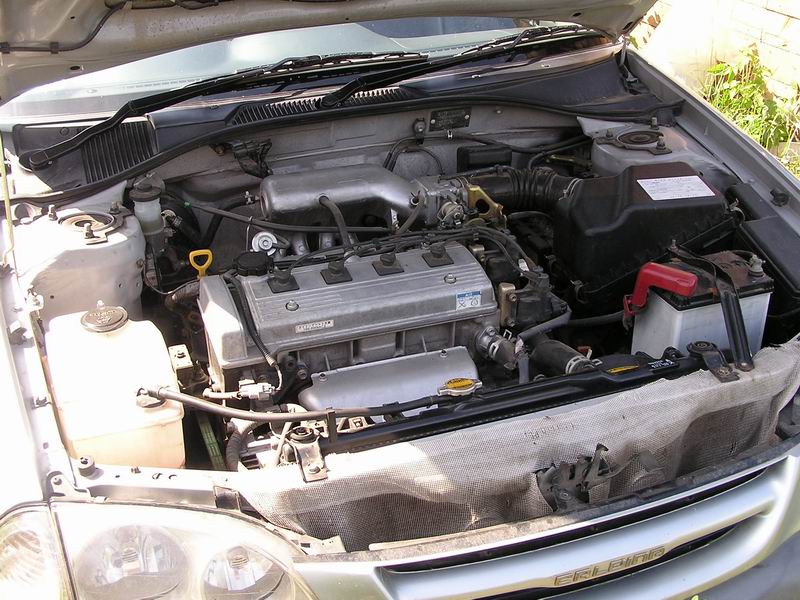
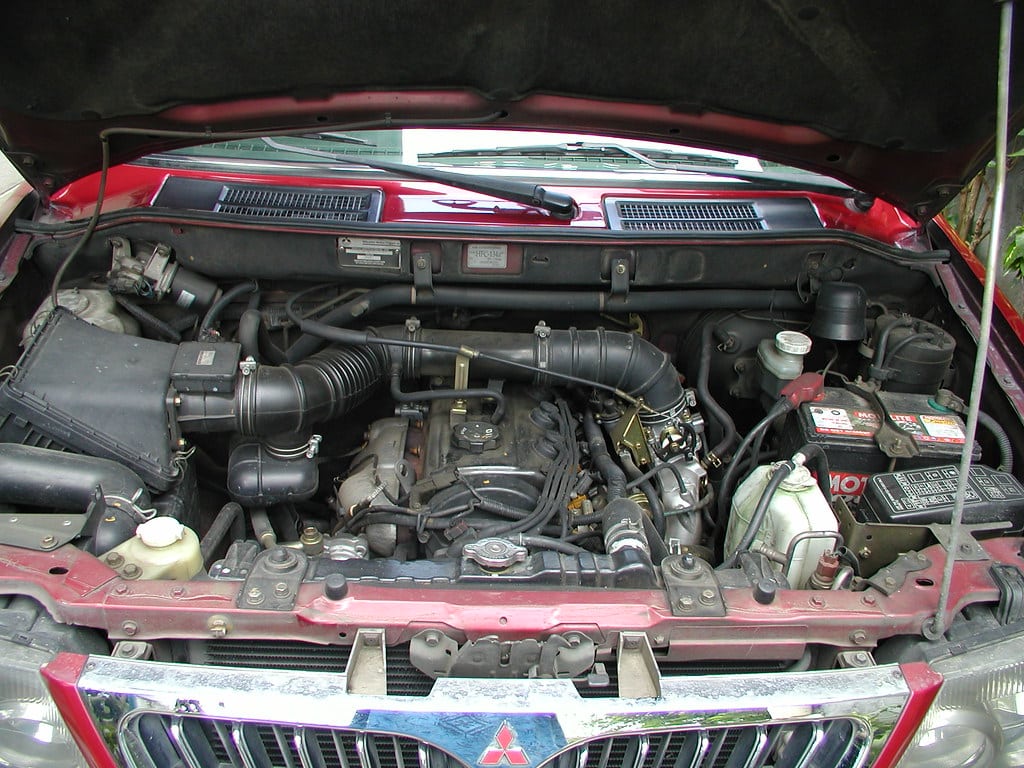
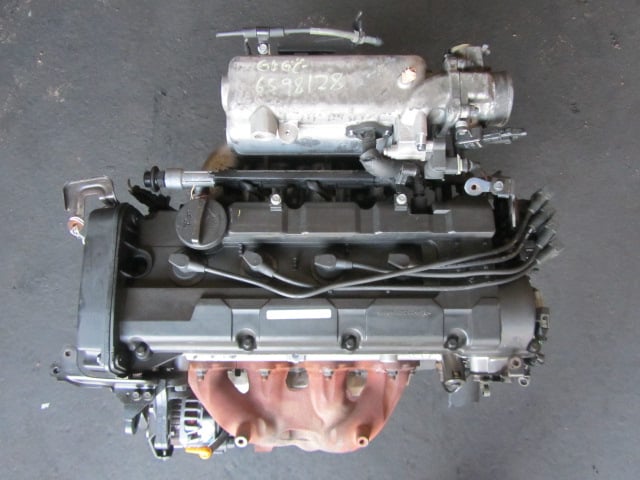
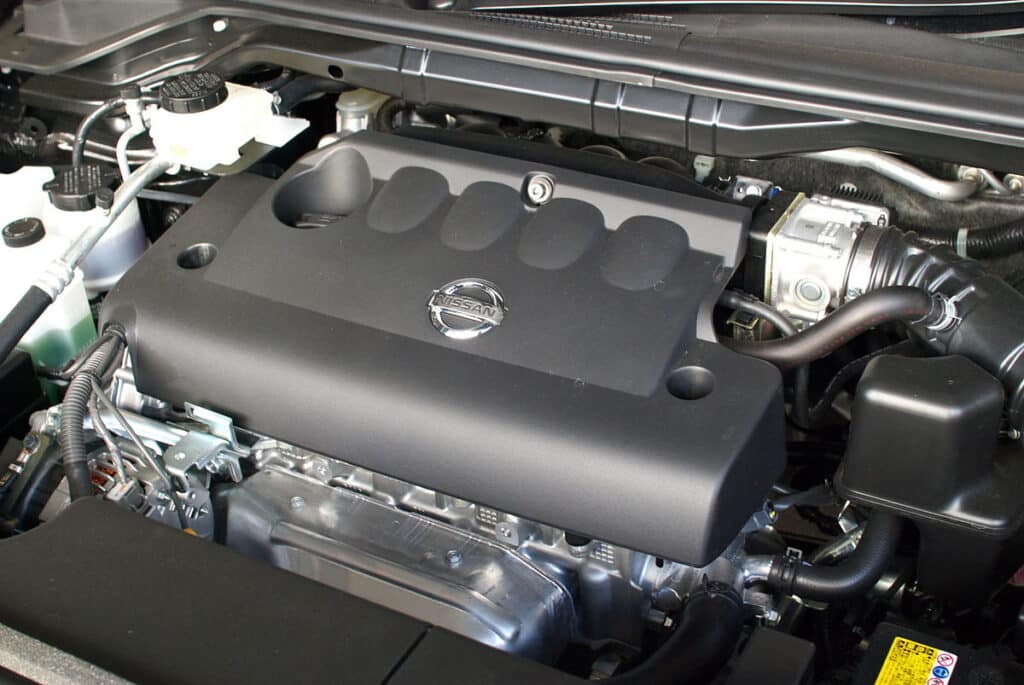
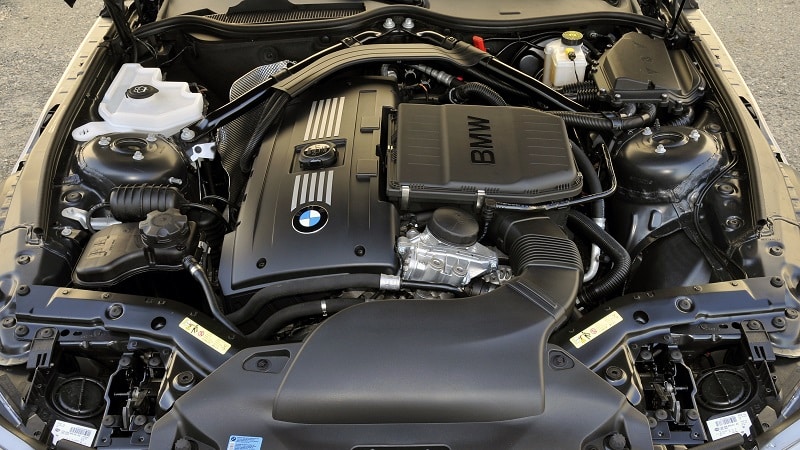

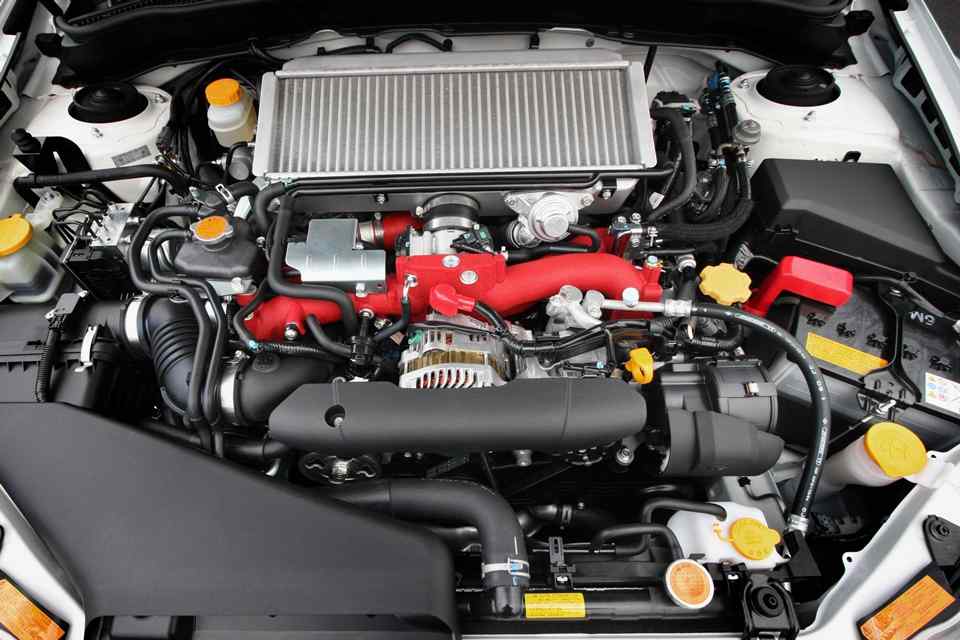

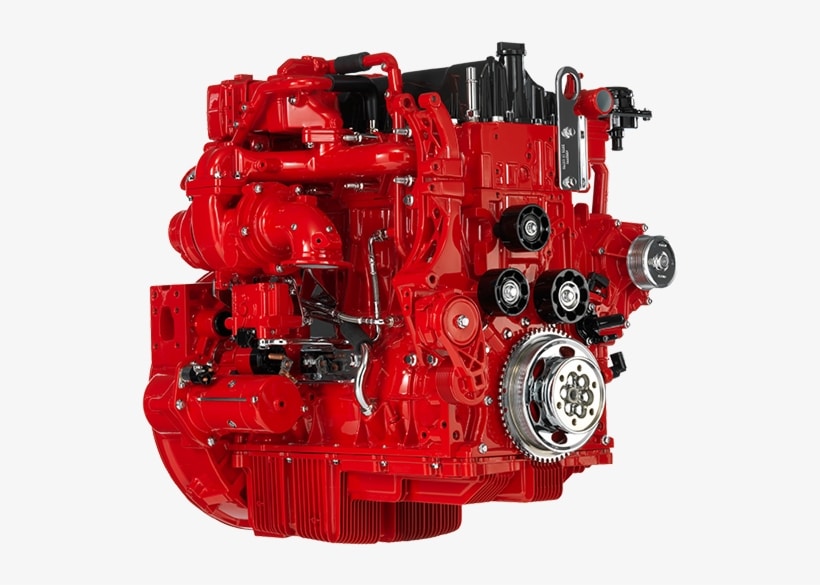
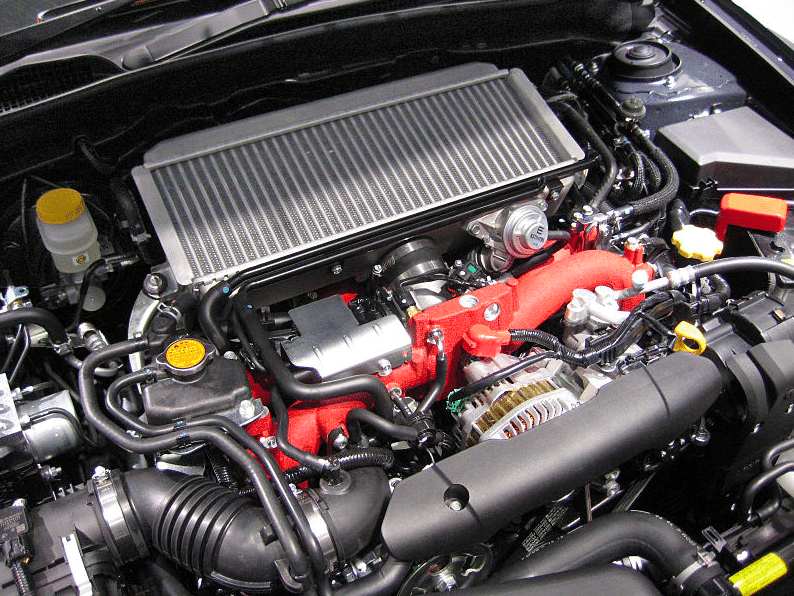
Problem Starting from the cold
Hello! Please, give us a bit more details…
A lot of great information on the 4G64.
What is the recommended oil filter for the 4G64?
We have a Delica van.
Official owner’s manual: Oil filter type – RZ 372 (Repco)
Excelent engine..
ive been having problems with my particular engine and its been worked on by so many “specialists” im hoping you can help me by advising which engine can i swap it out with with minimal need for fabrication and as cheaply as possible. i have mitsubishi chariot. is diesel an option too??
Hi guys. I have a 1987 mitsubishi van 2.4 4G64 I believe. Did the head gasket, took to the machine shop and follow all the supplies steps. Head gasket still leaking, before it was leaking into the cylinder, now it’s mixing with oil. Checked compression, leakdownm. Nothing showing Any suggestion? Thanks in advance.
Double-check head gasket installation – Make sure the new gasket is properly aligned and seated when it is replaced. Improper installation can lead to leaks. Inspect carefully.
Check head mating surface – Any warpage or imperfections in the head or block’s mating surfaces can prevent proper sealing. They may need to be machined to achieve a perfectly flat surface.
Retorque head bolts – Over time, head bolts can loosen slightly. Retorquing them to spec can help improve the seal. Do this in the proper sequence and torque pattern.
Use a head gasket sealer – A high-quality spray sealer like Permatex can help seal any minor surface imperfections. Follow directions to prep and apply.
Check for cracks – Very small cracks in the head or block could cause external leaks. Use a dye penetrant to check for cracks if needed.
Replace head gasket – The gasket may be defective if all else fails. Trying a new genuine Mitsubishi head gasket may be necessary.
I rebuilt my 2.4l 4g64 8v sohc engine.out my 92 Dodge ram50.and need 1 piston and connecting rod.i had one save up.please help.everything I ordered won’t fit
My 4G64 engine in a mitsubishi space wagon 2003 has its four spark plugs carrying sooth and the makes the engine not to idle well or move. What do I do. I have changed nozzle whole set twice in a week. Likely problems and solution.
A few different things could cause this:
Clogged fuel injectors – When injectors get dirty, it can restrict fuel flow, causing poor idle, hesitation on acceleration, etc. I would recommend using a good fuel injector cleaner and running it through the system to see if it helps clean things up. Replacing the injectors may be needed if they are very clogged.
Vacuum leaks – Any air leaks in the intake manifold or vacuum lines can cause similar symptoms. Carefully inspect all the hoses and connections to see if you notice any cracked/loose hoses or fittings. Resealing any leaks found should help smooth out engine performance.
Ignition system issues – Problems like worn spark plugs, bad plug wires, or ignition coil failure can affect ignition timing and weaken the spark, leading to poor combustion. I’d suggest inspecting and testing the ignition components (plugs, wires, coils) to ensure they are in good working order.
Fuel pressure/pump problems – Weak fuel pressure due to a failing pump or clogged filter can also cause poor idle, hesitation, etc. You’ll want to check fuel pressure at the rail to confirm it’s in spec. The pump may need replacement if the pressure is too low.
Start by checking those items first. Hopefully, inspecting the ignition components, fuel delivery system, and intake for vacuum leaks will reveal the problem. Let me know if you need any other suggestions